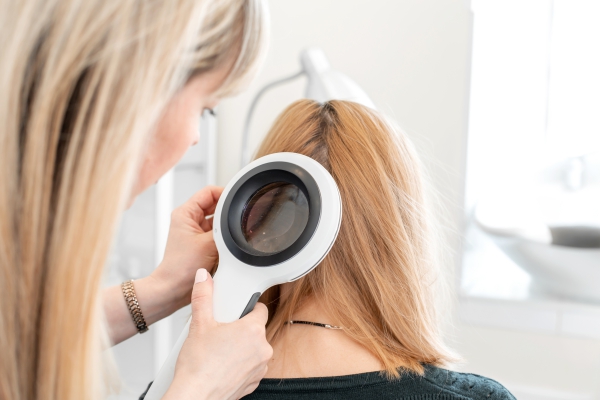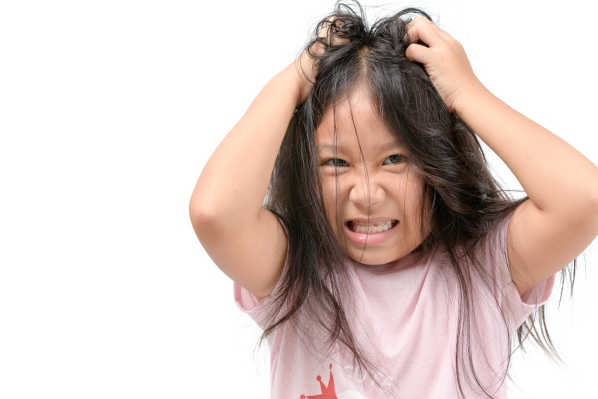Head lice infestation, Lice, Nits, Pediculosis, Itchy scalp
Description : Head lice infestation, also known as pediculosis, is a common condition that dates back to a very
Article Details :
What is head lice infestation?
Head lice infestation, also known as pediculosis, is a common condition that dates back to a very long time ago. Despite being common and easily managed, it remains a major problem worldwide. It is a very common condition for which people, especially children, seek medical help. It can arise in any socioeconomic group and can affect both adults and children. It is a common cause of psychological distress and accounts for many missed school days and absenteeism due to its ease of transmission. Head lice infestation is very common and it is estimated that around 6-12 million Americans aged between 3 to 11 years are affected each year. It is more common during warmer months.
Lice feed on human blood by piercing the skin and injecting their saliva. This can result into itchiness as it triggers an allergic reaction in the skin. Contrary to common myths, lice can only crawl as they do not have wings and they do not hop. An adult female head louse can lay around 3-6 eggs, also known as nits, each day. Nits are white and are around 1mm long. The eggs hatch after 8-9 days and reach maturity after 9-12 days.
What causes head lice infestation?
The louse responsible for head lice infestation is known as Pediculus capitis. Head lice feeds on human blood through bites. It can be transmitted from one person to another through close personal contact and it cannot fly or hop. Rarely, the lice is transmitted through combs, brushes, clothes, scarves or hats. Spread of head lice is common in overcrowded places. Lice are also very much present among animals. Human lice is present in all countries and in all climates. The head lice usually feed around 5 times per day. They lay their eggs at the base of the hair fibres. The female louse glues the nits to the hair shaft. This makes the nits difficult to remove.
How can head lice be transmitted?
Spread of head lice occurs through direct physical contact with an infested individual. Head-to-head contact usually occurs in schools, at home or during playtime. Lack of personal hygiene or environmental cleanliness do not impact the risk of having head lice.
In some cases, transmission may occur through fomites such as clothes, hats, combs or hair accessories. The following factors may increase the risk of having head lice:
- Being young
- Living in close and crowded areas
- Being a female
- Being white or Asian
- Warm weather
What are the signs and symptoms of head lice infestation?
Most of the cases of head lice infestation are discovered at school routine checks. The most common symptom of head lice infestation is itching. The itching often disturbs the person’s sleep. The most commonly infested sites include the scalp, back of the neck or behind the ears. In some cases, small bumps may arise at biting sites.
Crawling lice and nits are often visible to naked eye on inspecting the head and scalp. Sores on the scalp or skin may also be present due to excessive scratching.
How is the diagnosis of head lice infestation made?
To make the diagnosis of head lice infestation, your doctor will first start by asking you a series of questions to know more about your symptoms. He/she will then proceed to a physical examination focusing on the head and scalp.
In order to make the diagnosis of an active infestation, your doctor should be able to identify a live immature or adult louse. A fine-toothed comb (nit comb) is used all throughout the length of the hair when it is wet. If you have an active infestation, live lice are likely to be found on the comb. No further tests are usually required for the diagnosis of head lice.

How is head lice infestation treated?
The management of head lice infestation comprises of 2 important parts: Use of medications and environmental measures.
There are several over-the-counter products that are effective in the treatment of head lice infestation. These medications may have to be used in a timely manner as they do not necessarily kill nits, and therefore will have to be used again once they hatch. The main ingredient present in head lice medications is pyrethrin. It is available in the form of shampoos. It is important that you closely follow the instructions present on the medications about how and how long to use.
Pre ion medications may be recommended in some cases where the head lice may have developed resistance to over-the-counter medications. This resistance may arise after incorrect use of medications or failure to repeat the treatment at the required interval. Your doctor knows best when and which one should be given depending on the specific case.
It is also recommended to use a fine-toothed comb on wet hair to facilitate removal of lice and nits. This should be repeated 3-4 times per week. Avoid sharing towels, hats, combs and bedding with infested individuals. If other family members have head lice infestations, they should be treated too.
What are the possible complications of head lice infestation?
There is evidence that in some cases, lice can be vectors for diseases such as typhus, trench fever or louse-borne relapsing fever. Excessive scratching may also result in excoriations which can favour secondary Read more



